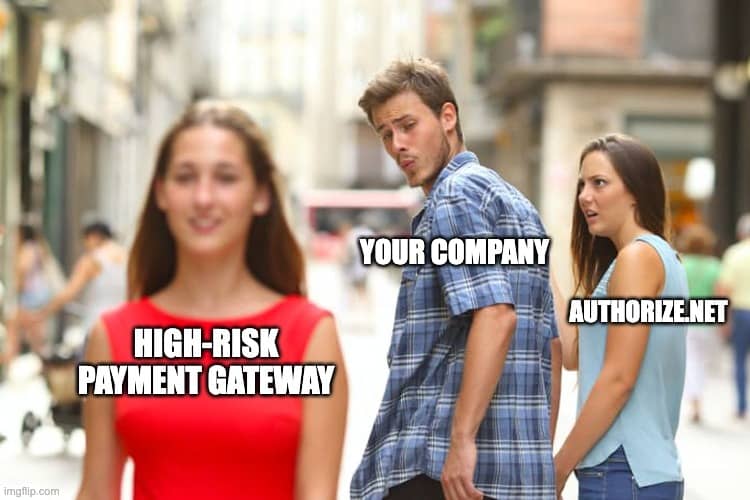What Is a Terminal ID Number (TID)?

Card processing companies use various identification codes when credit card payments are processed. These codes act as safeguards to ensure that every transaction is unique and provide another layer of protection for banks, payment processors and merchants. One of the most important point-of-sale codes in a transaction is the Terminal ID Number.
This unique number serves as an identifier for a transaction so it can be monitored and traced throughout the payment process. In addition, as a security tool, the Terminal ID Number is especially helpful in cases where the bank investigates chargebacks, disputes or fraudulent activity. When these issues arise, you can easily access the payment information through the Terminal ID Number.
If you’re concerned about fraudulent activity on your merchant account, Zenti offers safe and secure payment processing services for high-risk merchant accounts. Zenti can help you get approved to accept all major credit cards and digital wallet payments, at fees you can afford.
Table of contents
- What is a Terminal Identification Number?
- Finding the Terminal ID Number
- Differences Between Terminal ID and Merchant ID Numbers
- What is a Merchant ID Number?
- Finding Your Merchant ID Number
- Can Merchant ID and Terminal ID Numbers Be Shared?
- Can You Have More Than One Terminal ID Number?
- How Do You Get a Terminal ID and Merchant ID Number?
- What is a High-Risk Business?
- When Should You Use Your Merchant ID and Terminal ID Numbers?
- How Can You Protect Your Merchant ID and Terminal ID Numbers?
What is a Terminal Identification Number?
A Terminal ID Number (also known as a TID or TIN) is eight numbers formatted into a code unique to each payment terminal. Since no two TIDs are alike, this series of numbers serves as a fingerprint for every transaction. Using a TID, merchant account providers can track and trace individual payments in case of an issue. Additionally, TIDs enable payment processors and banks to track the number of transactions that occur during a given time.
A TID is assigned to each transaction, regardless if the payment is entered manually or through a contactless sale. Since TIDs are imprinted on card-present and card-not-present transactions, they’re an indispensable security tool for merchants, processors, acquiring banks and card issuers.
Finding the Terminal ID Number
As a merchant, you may not need to access your Terminal ID Number regularly. Most commonly, if you need to track a payment or dispute a chargeback claim, you will need to provide your TID to the card issuer. Another reason you might need your TID is to provide it in the event of a chargeback investigation by your bank or payment network.
The Terminal ID Number will always be included on a transaction statement or receipt. Its exact location may vary according to your payment gateway or processor, but you should see the words “merchant terminal number” somewhere on the transaction. With some processing companies, you may find it near the account or settings tab, while others may place it closer to the transaction information. However it’s formatted, your Terminal ID Number should be clearly marked so you can easily locate it on your receipts and transaction statements.
Differences Between Terminal ID and Merchant ID Numbers
Merchants have two identification codes: Terminal ID Number and Merchant ID Number. Although each has a different role, the two work similarly as unique identifiers for tracking payments. Without a Merchant ID Number, merchants wouldn’t be able to get paid.
What is a Merchant ID Number?
As the name implies, a Merchant Identification Number (MID) is a unique 15-digit code that payment processors give to their merchant clients. A MID identifies the merchant in bank, credit card and transaction communications.
Additionally, MIDs have another important function: They ensure that the money ends up in the right place. Once a customer has paid you, your MID is used throughout the transaction so banks can route the funds correctly to your account. Without this all-important MID, banks wouldn’t know where to send the money, and you wouldn’t get your payments.
If you’re having trouble getting approved for streamlined payment processing, Zenti specializes in high-risk merchant services. No matter what type of business you’re in. Zenti can help you get approved for a full roster of payment processing services. With Zenti, you’ll be able to accept VISA, Mastercard, American Express and Discover, plus echeck and mobile app payments, at affordable rates.
Finding Your Merchant ID Number
Like your terminal ID, your Merchant ID Number is unique to your account. You can find your Merchant ID Number on your receipts, monthly statements and your credit card terminal. Here’s where to look:
Monthly merchant statement: Your MID should be in the upper right-hand corner.
Credit card receipts: Look at the top of the first page, after the word “terminal.”
Credit card terminal: Your MID will be on a sticker or label.
It’s important to be aware that a merchant ID is private. It’s not kept in a public list, website or database, so you won’t be able to look it up online. To access your MID quickly, you can call your merchant services provider who issued you the number and they’ll be able to find it immediately.
Can Merchant ID and Terminal ID Numbers Be Shared?
Both your merchant ID and Terminal ID Numbers are personal identification codes. You should never share them with anyone other than your bank or processing company. If your Merchant ID Number isn’t secure, it could be stolen and used for fraudulent transactions.
Since your Terminal ID Number is tied in with your payment terminal, you’ll retain that number while you’re using that device. However, if you change your payment processor, you’ll get a new Merchant ID Number.
Can You Have More Than One Terminal ID Number?
Each of your card terminals will have a unique Terminal ID Number, so if you have more than one card terminal, you’ll have more than one TID.
The same holds true for Merchant ID Numbers. In many cases, larger businesses may have a unique Merchant ID Number for each revenue source.
How Do You Get a Terminal ID and Merchant ID Number?
Once you’re approved for payment processing services, you’ll receive a payment terminal with its own unique Terminal ID Number. You’ll also receive a unique merchant account number to identify your transactions. However, if you’re in a high-risk industry, you might have difficulty getting approved for merchant services.
If you have a high-risk business and you’re trying to get approved for merchant account services, Zenti can help. As a leading high-risk payment processing provider, Zenti can get you approved for all major credit cards and digital wallet payments. In addition, Zenti offers affordable low rates and options for zero-fee processing.
What is a High-Risk Business?
Here are some common reasons why businesses are designated as high-risk:
Unusually high transaction volumes
The more transactions a company has, the riskier that business might seem to banks and credit card companies. Financial institutions sometimes view unusually high transaction rates as a red flag for fraudulent activity.
Poor credit history
If your business has a low credit score, you may have trouble getting approved for payment processing services. Banks and processors are reluctant to work with any business that appears to be a bad credit risk.
High levels of industry fraud
Some industries are traditionally associated with higher levels of fraudulent activity. These include adult entertainment sites, online gambling sites and nightclubs.
Tax or licensing problems
If you have any unresolved tax debt or any irregularities in your business license, banks and payment processors might not approve you for merchant account services.
High volumes of card-not-present transactions
The term “card-not-present” refers to transactions where the merchant doesn’t physically receive the credit card. Card-not-present transactions can include all ecommerce sales, as well as transactions made over the phone. Since the credit card is never handled or inspected by the merchant, card-not-present transactions carry a higher risk of fraud. In fact, statistics show that card-not-present fraud is now 81 percent more prevalent than point-of-sale fraud. Additionally, research shows that in the US, nearly 80 percent of fraudulent transactions involve card-not-present transactions.
And last but not least:
High chargeback rates
Chargebacks occur when a cardholder requests a bank or credit card issuer refund. Common reasons for chargebacks include:
- The item didn’t arrive
- Customer dissatisfaction
- Merchant error or a duplicate order
- Item damaged
- Fraudulent charge
For banks and credit card networks, chargebacks are a primary reason for concern because they can represent huge losses in revenue. Globally, chargebacks are projected to cost merchants around 117 billion USD by 2023. While chargebacks are inevitable, too many of them can increase your transaction fees.
In a worst-case scenario, excessive chargeback rates may even lead to a loss of your merchant account. This would cause you to lose your merchant and Terminal ID Numbers, plus all of your payment processing services. And if you don’t have a merchant account and are trying to apply, high chargeback rates may cause you to be denied these valuable merchant services.
If you’re worried about high chargeback rates and fraudulent charges, Zenti can help you streamline your monthly invoices and monitor your transactions. Plus, Zenti only works with Payment Card Industry (PCI) compliant payment processors, so every transaction is made according to the highest security standards and protocols.
When Should You Use Your Merchant ID and Terminal ID Numbers?
Your merchant ID and Terminal ID Numbers should appear on all of your transaction receipts and monthly statements. In addition, both identifiers should appear on any correspondence that your bank, payment processor or credit card network sends to your business. This correspondence may include routine communications about your account or notifications about chargeback claims, payment disputes or suspicious activity.
Likewise, you should include your merchant ID and Terminal ID Numbers on any correspondence that you send to your acquiring bank, issuing bank, payment processor or credit card company.
How Can You Protect Your Merchant ID and Terminal ID Numbers?
Since your merchant and Terminal ID Numbers are unique to you and your business, you’ll want to take steps to protect them from getting hacked or stolen. You’ll also need to ensure that your merchant ID is always kept private. Be careful not to share it with anyone, and keep your business correspondence, receipts and statements in a secure place where possible scammers can’t see them.
Merchant and terminal IDs act as commercial validation, proving to banks and payment processors that you have a legitimate business. And by having top-grade merchant account services, you’re proving to your customers that your business is professional and reputable. Plus, you’re showing that you care enough to offer your customers the safe, secure payment methods they prefer for their transactions.
Zenti can provide you with the payment options you need to boost revenues and gain customer loyalty. With Zenti, you’ll be able to accept all major credit cards, echecks and digital wallet payments without having to pay excessive high-risk fees. Plus, we offer tools to streamline your invoicing, track your payments and keep your transactions secure. Contact Zenti to find out how you can get the payment processing services you need for success.
Read Next

Find out whether Authorize.Net works for high risk merchants, what restrictions you might face and how to get approved.

Get expert advice on selling CBD products on Shopify, including compliance tips and setting up secure payment options.

Find out why Square may deactivate merchant accounts and steps to resolve issues and maintain uninterrupted payment services.
Need a High-Risk Merchant Account?
Disruption-free payment processing at the best price for your situation, guaranteed.
Get Free Guidance Now!